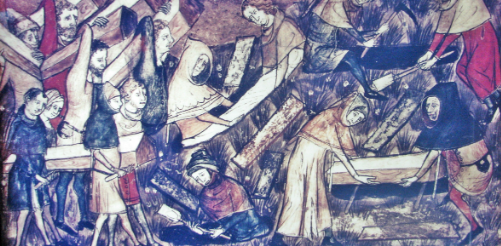Medieval history is seldom kind. The decades and centuries slumbered onwards, each one bringing its own share of wars, crime, poverty…and disease. Happiness and prosperity were rare and almost unknown for the lower classes, and the common man’s future looked about as bright as a bottom of a barrel. And to make things worse, the 14th century brought a devastating disease, a vermin-borne plague that swept from the windswept steppes and trade routes of the East, a microscopic death that rode triumphantly on the backs of rats.
This striking plague, known as the Pestilence, the bubonic plague, or the Black Death, ravaged Europe from roughly 1347 to 1351, harvesting around 200 million lives in one fell swoop. From 30-60% of the entire European population was dead, taken away by the invisible hand of an unknown and merciless illness. How did Europe recover?
How did medieval society deal with this uncompromising illness, in a time when medicine was crude, superstitious, and not even in its infancy? Today we are painting a truly macabre and unsettling picture, as we recount the grim tale of the Black Death.
Read more: ancient-origins


































